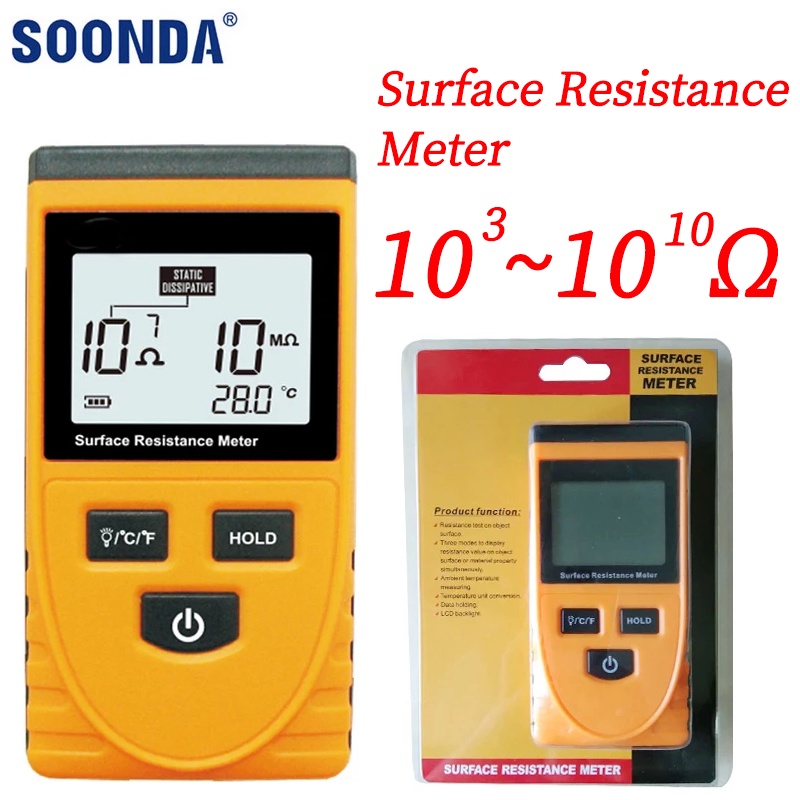The measurement of earth resistance serves as a pivotal element in electrical and civil engineering, particularly when assessing the efficacy of grounding systems. A thorough understanding of this phenomenon necessitates the exploration of the various instruments historically and contemporaneously employed in measuring earth resistance. Among the plethora of devices available, the handheld earth resistance meter stands out for its practicality and ease of use. This article delves into the intricacies of earth resistance measurement and elucidates the significance of this metric in enhancing safety and reliability in electrical systems.
At its core, earth resistance refers to the resistance encountered by an electric current as it disperses into the ground through a grounding electrode system. Grounding systems are essential in mitigating the risks associated with electrical faults and ensuring operational integrity. In this context, the measurement of earth resistance becomes imperative as it provides insight into the effectiveness of the grounding system, which can significantly influence the performance of electrical installations.
Among the instruments designed for this purpose, the handheld earth resistance meter offers various functionalities that accommodate diverse applications. This device, often portable and user-friendly, typically operates on the principles of the three-electrode method, also known as the Wenner or fall-of-potential method. In this configuration, two current electrodes are driven into the ground at a specified distance, while a voltage electrode measures the potential difference that arises between them. The resistance value is subsequently calculated using Ohm’s law, illustrating a fundamental relationship between voltage, current, and resistance.
In advancing our understanding of why measuring earth resistance is critical, one must first consider the ramifications of inadequate grounding. A compromised grounding system can lead to various hazards, including electric shock, equipment damage, and even catastrophic failures in electrical distribution networks. The impedance presented by the grounding system directly affects its ability to facilitate the dissipation of fault currents. Hence, accurate assessment of earth resistance becomes quintessential.
A handheld earth resistance meter invariably incorporates several features that enhance its utility. For instance, many of these devices include functionalities to measure not only resistance but also soil resistivity, capacitance, and inductance. Soil resistivity, a vital parameter, is an inherent property of the ground that varies with temperature, moisture level, and mineral composition. Understanding these variations allows engineers to make informed decisions regarding the appropriate design and installation of grounding systems. Thus, the versatility of the handheld meter transforms it into an invaluable tool for professionals in the field.
Additionally, the precision of measurement offered by modern handheld earth resistance meters has seen substantial improvement with technological advancements. Digital displays, automated data logging, and connectivity options such as Bluetooth further enhance the operational capabilities of these instruments. Such features enable users to document reading trends over time, thus fostering a proactive approach to maintenance and inspections.
Beyond the technical specifications, the larger significance of measuring earth resistance embeds itself in the broader discourse on electrical safety and sustainability. As the electrification of society continues to proliferate, the imperatives surrounding effective grounding become even more pronounced. The increasing integration of renewable energy sources necessitates robust grounding practices to ensure system stability. For instance, wind and solar energy installations inherently carry risks associated with lightning strikes and transient surges. Therefore, measuring and optimizing earth resistance in these systems is not merely a procedural exercise; it is a requisite for operational reliability and safety.
Furthermore, in contexts like telecommunications, where complex wiring and high-frequency signals are prevalent, the need for dependable grounding intensifies. Grounding systems help reduce electromagnetic interference, thereby enhancing signal clarity and transmission reliability. Accurate measurement of earth resistance therefore plays a crucial role in the holistic management of communication networks.
Regulatory bodies and standards organizations also underscore the necessity of regular earth resistance testing. Many mandates stipulate maximum resistance values for grounding systems, compelling entities to adhere to rigorous testing protocols. Such regulations serve as a safeguard, fostering a culture of accountability and safety across various industries.
In conclusion, the exploration of instruments used for measuring earth resistance—particularly handheld earth resistance meters—reveals a convergence of technology, safety, and practical engineering. The portability, versatility, and technological sophistication of these devices render them indispensable not only in ensuring compliance with safety regulations but also in proactively addressing potential hazards. As electrical systems become increasingly ubiquitous, the measurement of earth resistance will remain a cornerstone of engineering practice, shaping our understanding of grounding effectiveness in a dynamic and evolving technological landscape.
Thus, the inquiries surrounding earth resistance measurement encapsulate a broader narrative on safety, innovation, and the continuous quest for reliability in our electrified world. With each measurement taken, we engage deeply with the rhythm of nature, enhancing our understanding and ensuring a safer future.










